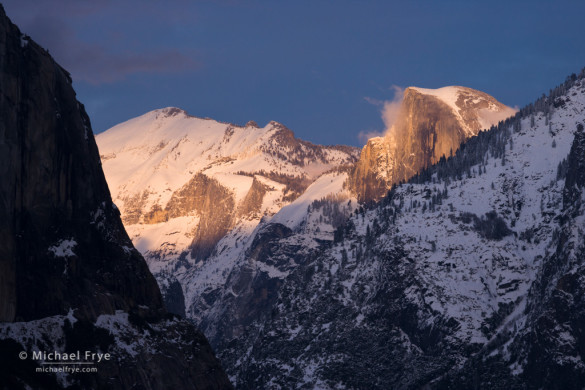
Half Dome at sunset from Tunnel View, Yosemite. The dramatic light might grab your attention here, but the interlocking diagonal lines create a cohesive design and a sense of energy.
One of the keys to learning composition is to think abstractly. As Ian Plant says in his excellent ebook about composition, Visual Flow, “Learning to think abstractly about visual elements is the single most important thing you can do to improve your compositional skills.” The less you think about the subject, and the more you think about the underlying abstract design – the lines, shapes, and patterns – the better your compositions will be.
It’s often easier to think abstractly when photographing a small subject, like a pattern of leaves, or a series of cracks in ice. But it’s just as important to look for repeating lines and shapes in big, sweeping landscapes. One of the most common – and powerful – designs in these big scenes is a series of interlocking diagonal lines. Most hilly or mountainous areas have an abundance of diagonals, and diagonal lines give a photograph a sense of dynamic energy and motion – a perfect fit for dramatic landscape images.
Here’s a mini-portfolio of photographs featuring diagonal lines. I hope these will encourage you to think more abstractly the next time you’re standing in front of a big, sweeping landscape – or any scene!
— Michael Frye
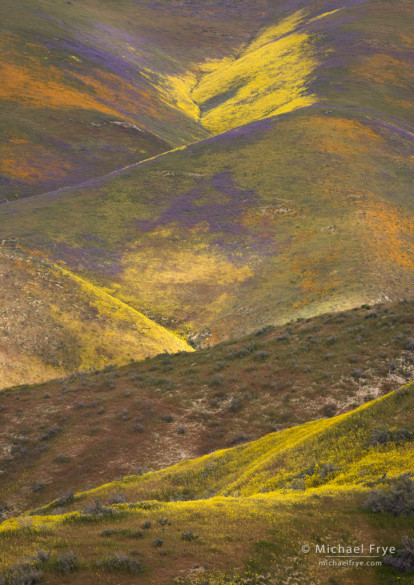
Painted hills in the Temblor Range. Again, interlocking, crisscrossing, diagonal lines give this photograph a sense of motion and energy.
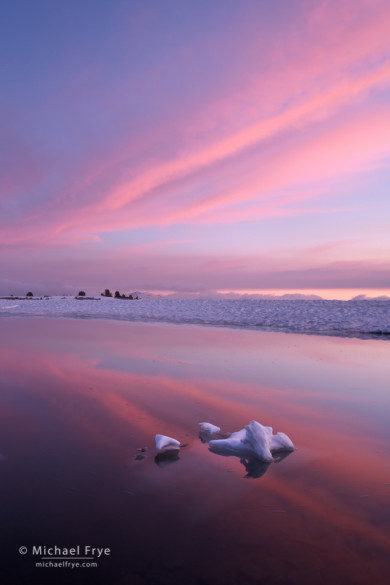
Sunset clouds and a small iceberg, Yosemite. Diagonals can be created by clouds as well as landforms.
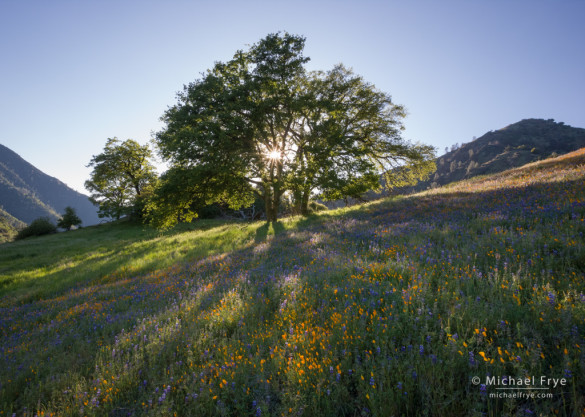
Poppies, lupine, and oaks, late afternoon, Sierra Nevada foothills near El Portal, California. Sometimes you can “create” diagonal lines by using a wide-angle lens to exaggerate the foreground perspective. If you were hovering above this scene looking down, the shadow lines would look almost parallel, but using a wide-angle lens amplifies the vanishing-point effect and creates diagonals. Conveniently, those foreground diagonals fit with the diagonal ridges in the background, and the spreading shape of the tree.
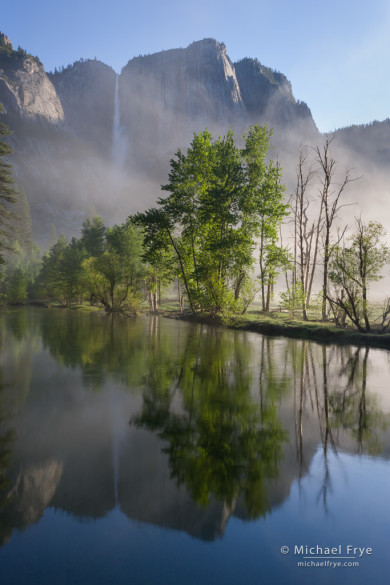
Yosemite Falls on a misty spring morning, Yosemite. Sometimes diagonal patterns are subtle, but if you look you’ll find them. How many diagonal lines can you see in this photograph?
Related Post: Noteworthy Books
Did you like this article? Click here to subscribe to this blog and get every new post delivered right to your inbox!
Michael Frye is a professional photographer specializing in landscapes and nature. He is the author or principal photographer of The Photographer’s Guide to Yosemite, Yosemite Meditations, Yosemite Meditations for Women, Yosemite Meditations for Adventurers, and Digital Landscape Photography: In the Footsteps of Ansel Adams and the Great Masters. He has also written three eBooks: Light & Land: Landscapes in the Digital Darkroom, Exposure for Outdoor Photography, and Landscapes in Lightroom 5: The Essential Step-by-Step Guide. Michael has written numerous magazine articles on the art and technique of photography, and his images have been published in over thirty countries around the world. Michael has lived either in or near Yosemite National Park since 1983, currently residing just outside the park in Mariposa, California.







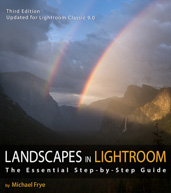
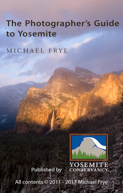
Superb article and a superb explanation for amateurs like us . One more thing I would like to suggest is shooting in black and white helps beginners see designs and lines easily in a photograph .
Thanks Apoorva, and that’s a good suggestion.
Great article for beginners and experienced photographers who need constant reminders to see beyond the obvious! Seeing abstractly is sooooo important to get to the next level. Thanks for the great examples!
Indeed Karl, and thanks!
Great essay, Michael. Thanks very much. And congratulations on the article in “Outdoor Photographer.” It came in the mail today and it is excellent.
Thanks Robin! Glad you like this post, and the article in OP. It’s an excerpt from my Landscapes in Lightroom 5 ebook, which you might already have… ? If so, it should seem familiar. 🙂
Very inspiring article. Lots of tidbits of information. Thanks.
BTW I’m considering a workshop to Yosemite in February.
Thanks Lynn! I’m not doing any workshops in February, if that’s what you’re asking about, but there are lots of other people who do workshops at that time.